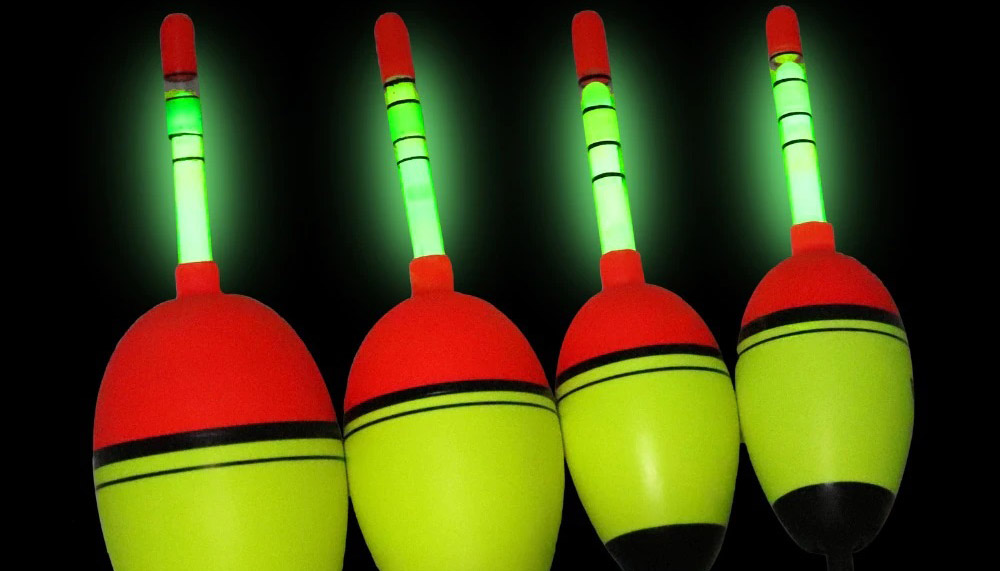
🚩It is very important to know! At night you need a luminous float. The light must be sufficient – light stick buy the largest size according to the design of the float. The choice of color (red, green, blue) is an individual decision.
Embracing the Mystery: Night Float Fishing
Overview of Night Fishing
Night fishing presents a unique set of challenges and rewards that set it apart from daytime angling. As the sun sets, fish behaviors change, and new opportunities arise for anglers willing to adapt their tactics. The darkness and the tranquil atmosphere make night fishing an exceptional experience that many anglers enjoy. However, the lack of visibility can make it harder to detect bites and navigate, which means that having a specialized approach is crucial for success.
Float Fishing at Night
Float fishing is a popular method among anglers because it offers several advantages in low-light conditions. Using a float, also known as a bobber, provides a visual indicator of when a fish takes the bait, making it easier to detect bites even in the dark. Additionally, float fishing is versatile, allowing anglers to target a wide range of species in various environments such as lakes, rivers, and coastal areas.
Objective of the Article
The purpose of this article is to provide a comprehensive guide on how to fish in the dark using float techniques. We will cover essential gear, tips, and best practices to ensure a successful and enjoyable night fishing experience. From selecting the right equipment to mastering nighttime techniques, this article will help you unlock the potential of night float fishing.
Time and again we see anglers heading out to lakes or rivers at night to fish during this time of day. There are good reasons for this. The success rate of night fishing is very high. However, there are a few things to keep in mind when fishing in the dark. This kind of fishing is not easy, but you have a better chance than during the day and you will also be able to fish at dawn.
Essential Gear for Nighttime Float Fishing Success
| Topic | Explanations |
|---|---|
| Rod and Reel Setup | When it comes to night float fishing, choosing the right rod and reel combination is crucial. A medium or medium-light action rod with a length of 6 to 8 feet works well for most situations. The ideal reel for night float fishing is a spinning reel with a smooth drag system and a high line capacity. It’s important to ensure your gear is well-balanced and sensitive, allowing you to detect subtle bites and maintain control during the fight. |
| Float Selection | The type of float you choose for night fishing should offer excellent visibility while maintaining a stealthy approach. Consider using a float with a large, brightly colored top or one that features reflective or glow-in-the-dark paint. Some floats are specifically designed for night fishing, with a shape and color pattern that enhances visibility in low-light conditions. |
| Illuminated Floats and Accessories | In addition to traditional floats, there are several illuminated options and accessories that can improve your visibility and bite detection during night fishing. Electronic floats with built-in lights, chemical light sticks, and attachable LED lights are all useful tools for anglers fishing in the dark. When selecting illuminated floats and accessories, choose those with a subtle, non-intrusive light to avoid spooking fish. |
| Additional Equipment | Having the right additional equipment is essential for a safe and successful night fishing experience. Headlamps and flashlights not only help with navigating and performing tasks in the dark, but they also serve as a safety measure by making you visible to other anglers and boaters. Reflective clothing increases your visibility, and it’s essential to have spare batteries and backup lighting sources in case your primary lights fail. |
Mastering the Art of Float Fishing After Dark
| Topic | Explanation |
|---|---|
| Preparing Your Fishing Spot | One of the keys to a successful night fishing trip is to scout your chosen location during daylight hours. Familiarize yourself with the terrain, water depth, and any underwater structure or obstacles. Setting up markers and reference points will help you navigate your fishing spot more easily in the dark. Consider using reflective tape or glow sticks to mark these points so you can spot them with a flashlight or headlamp. |
| Adjusting Float Depth | Finding the right depth is crucial for success when night fishing with a float. Fish tend to behave differently and may be found at different depths during the night. Adjust your float depth accordingly to maximize your chances of success. Use a depth finder or a simple plumb weight to measure the water depth and determine the optimal float setting. |
| Bait Selection and Presentation | Effective bait types for night fishing often differ from those used during the day. Nightcrawlers, live minnows, and larger baitfish tend to be more effective at night due to their increased movement and scent profile. Adjust your bait presentation for low-light conditions by using larger or more visible hooks, or by adding subtle attractants like glow-in-the-dark beads or small LED lights. |
| Casting and Positioning | Accurate casting can be more challenging in the dark, but it’s still crucial to get your bait in the right spot. Practice casting during daylight hours to develop muscle memory, and consider using a lighter line to improve casting distance and accuracy. Minimize noise and disturbance when casting, as fish may be more sensitive to disturbances at night. Approach your fishing spot quietly and avoid shining bright lights on the water’s surface to prevent spooking fish. |
Hook, Line, and Sinker: Bite Detection in the Dark
✅Challenges of Bite Detection at Night: Bite detection at night can be challenging due to limited visibility and different fish behavior compared to daytime. Fish may be more cautious, leading to subtle or light bites that are harder to detect. Additionally, the lack of light makes it difficult to visually monitor your float, adding to the challenge.
✅Tips for Detecting Bites on a Float at Night: To overcome these challenges, focus on float movement and vibrations. Using a highly visible or illuminated float can help you see subtle movements more easily. You can also rely on your other senses, such as touch and hearing, to help detect bites. Pay close attention to the tension on your line, and listen for any splashes or disturbances in the water. You may need to adjust your attention and senses to become more attuned to the subtle signs of a fish taking your bait.
✅Setting the Hook and Playing Fish: When night fishing, you may need to adapt your hook-setting techniques. Be prepared to react quickly to any signs of a bite and set the hook with a firm, swift motion. Once the fish is hooked, stay focused on maintaining tension on your line, as it can be more challenging to see and control the fish in the dark. Make sure your drag system is set correctly to avoid breaking your line or losing the fish. Take your time when handling and landing fish in the dark, and consider using a headlamp or flashlight to help guide the fish into your net or onto the bank. Remember to handle fish with care and release them gently back into the water when finished.
Float Fishing At Night – Is It Worth Doing
I’m sure many of you have tried angling with a float rod during the day, but is it worth trying to do it at night? I can tell you from experience that, depending on what kind of fish you want to catch, you will have a good experience when fishing with a reliable float at night. During the summer months, it makes sense not to fish until dusk, as most fish become active only at night when outside air and water temperatures drop.
Some species of fish, such as eels and catfish, tend to be nocturnal regardless of the time of year. Other fish species, such as pikeperch, change their behavior in the dark and come out of their daytime hiding places. At dusk, at night, and in the early morning hours you can fish in peace, as very few anglers set up their rods in the lake or river at this time. In addition, all the other daytime noises are inaccessible at night. This way you can fully enjoy almost absolute peace of mind.
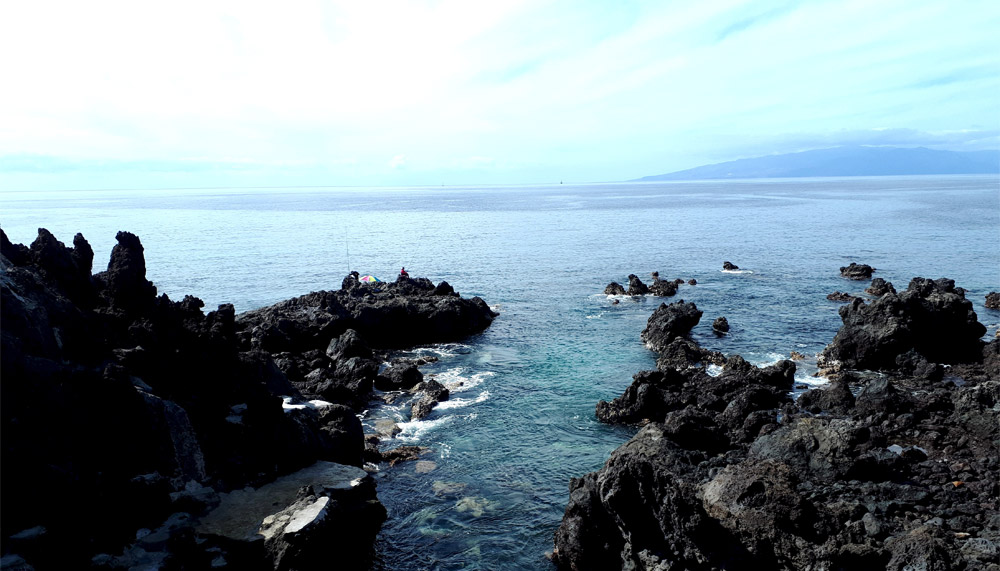
What Can I Catch Night Fishing
Many fish species are most active during the dawn and dusk hours. Why do they prefer night? There are several reasons. Many daytime fish are prey targets for predators. They are easier to catch in the dark, which encourages hunters to stick to the night mode. On the other hand, there are predatory fish that are mainly active during daylight hours. This forces some of their potential victims to hide during the day and go out to feed at night. The older the fish are, the more experienced, therefore more cautious and suspicious.
The night is the most favorable time for them. Many large fish prefer to live a strictly nocturnal lifestyle. On summer days, many water bodies are noisy. People swim and fish, jet skis, and boats come and go. Underwater wildlife prefers to take shelter at this time. At night, however, the long-awaited silence sets in and the fish come out to feed. Fish activity is also influenced by the weather, or more precisely by the summer heat. It forces the fish to lie dormant during the day. When the water temperature reaches maximum values. At night the water cools down, the conditions become more favorable and the fish become active.
During the night you can catch fish such as catfish, pikeperch, burbot, taimen, pike, perch, ruff, and others.
What Tackle Is Needed For Float Fishing at Night
In order for your night fishing to be successful, you need to use proven tackle. Also research in advance where you are going to fish. It’s best to do it during the day. Study the terrain, the depth, the current, the bait. Test your tackle, set it up. Every angler chooses the length of the rod himself. I like a longer rod. Select the float and the sinker for the rod in advance. You should also take some extra equipment with you.
Torch – Head Flashlight
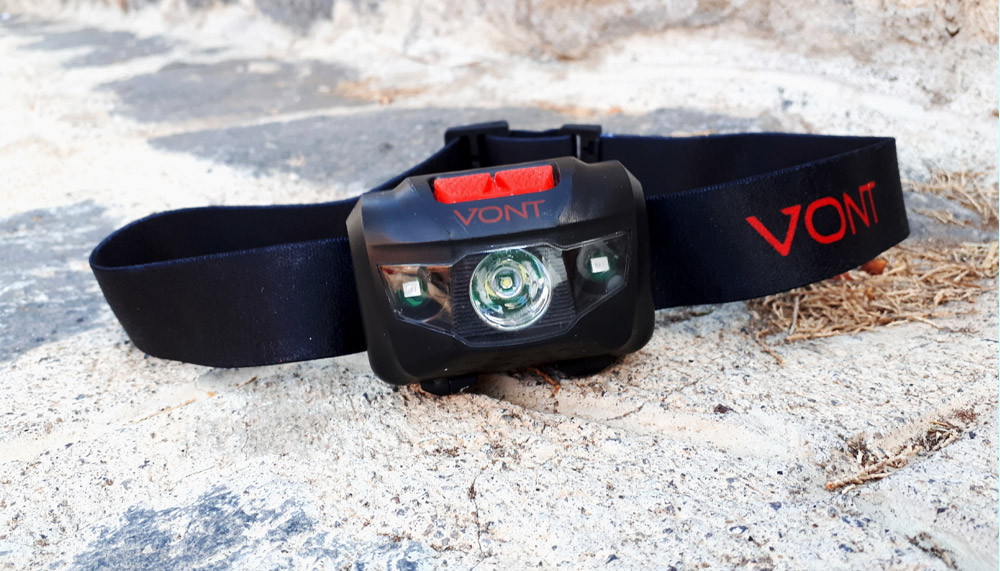
This is an essential item at night. For your convenience, I would recommend purchasing a night fishing headlamp. It is easy to choose. It should fit comfortably on your head and be able to work for more than 4 hours and have different modes of illumination. It should also flash (signal) a red light in case of danger. I personally like the Vont Spark Led Headlamp Flashlight Super Bright Head Lamp for its quality, reliability, and function. I’ve been using it for years.
Clothing
In the temperate zone, even summer nights can be chilly. Only a sudden warm atmospheric front, or a prolonged abnormal heatwave for at least two or three weeks, can give us some warm nights. But more often the thermometer, during the day reaching the 40-degree mark, may drop below ten degrees in the morning.
The chill of the night is particularly noticeable near bodies of water, in the humid atmosphere. The dew falling profusely on the banks only contributes to this. Going to fish at night, even with a favorable weather forecast, one should take a warm set of clothes just in case. Even if it’s not necessary to wear warm clothes during the night, during the day extra clothes can serve as a pillow when you sleep after fishing.
Starlites – Main Luminous Element
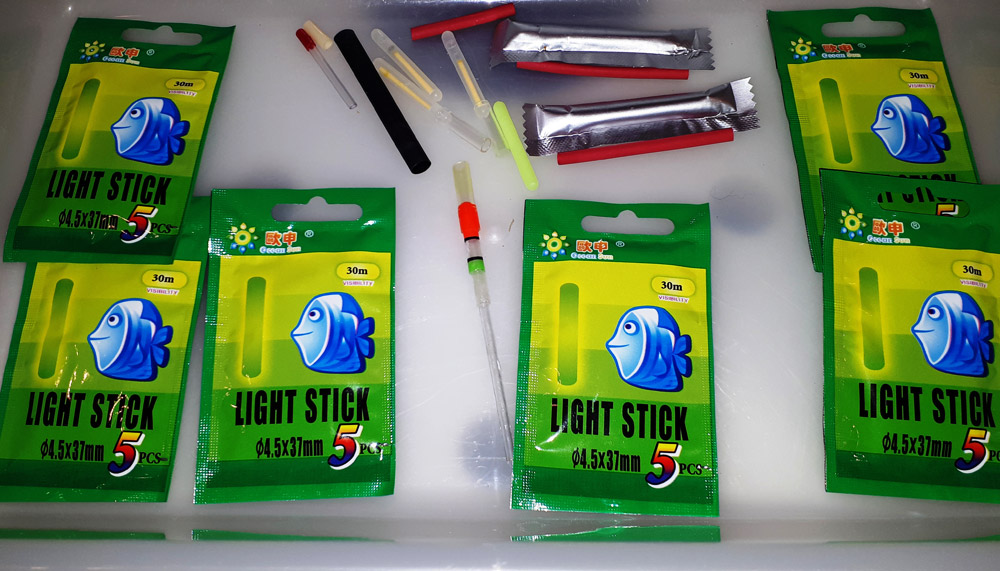
Starlites are small plastic tubes. When you break them apart, a chemical reaction will occur. Thus it will glow at night. The Starlite must be attached to the top of the float. This can be done with an oversized rubber band. Without this item, you simply cannot see your float in the dark.
Tent
Yet another aid in keeping warm during a night’s fishing. It’s particularly useful in cold weather. A good thing about the tent is that you can put a heater or other heat source inside it. The only disadvantage of the tent is the inability to visually and tactually control the tackle. Therefore, its use is justified only when night fishing is carried out with a sound alarm.
Types Dark the in Glow Bobbers Fishing Float
Floats with a Firefly

Another uncomplicated design, but effective in practice, is the method of equipping with a firefly. The firefly, in the action of its features, makes it possible to obtain a visible alarm device in the darkness throughout the night, without replacing and feeding the light-emitting element. The working principle of a firefly or so-called chemical wand is based on the flow of chemical reaction occurring due to the joining of two components located in a sealed polyethylene soft capsule.
A special liquid is concentrated in two separate sections of the firefly. By deforming the chemical wand by compression – simply put – crushing the capsule, the solutions mix, emitting light. The miniature firefly is inserted into the main body of the float. The design of the alarm may involve attaching the glowworm instead of an antenna or placing it in the hollow, transparent, and sealed antenna of the accessory.
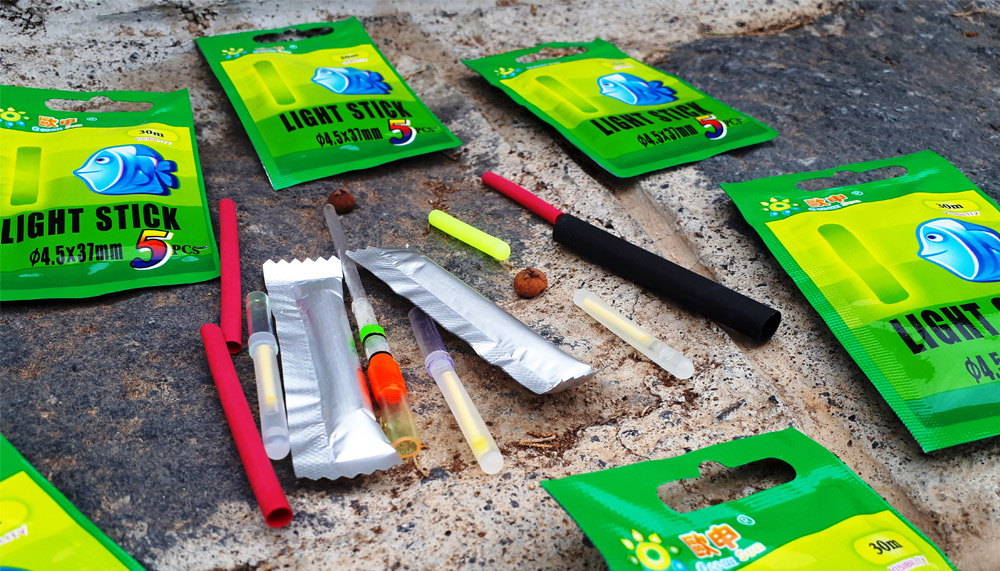
Artful and clever anglers attach the firefly to the antenna of a conventional float with a nipple rubber band or by tying it with ordinary string. This is a cheap and fast way to prepare a clearly visible float for night fishing, but like LEDs, it is a massive signal device and not suitable for delicate installations.
Electric Night Fishing Floats

They are characterized by a long lifespan and a more convenient and easy setup. With proper approach and selection of optimal parameters, it is possible to ensure long-term use of batteries without regular replacement. Additional advantages of electric fireflies are the possibility of regulating the intensity of illumination, high brightness of illumination, and the possibility of using miniature batteries. Manufacturers of such fireflies produce various models, which will satisfy any lover of night fishing. The minus of the products is a high price. However, it does not hit the fisherman’s pocket at all.
Luminescent Floats
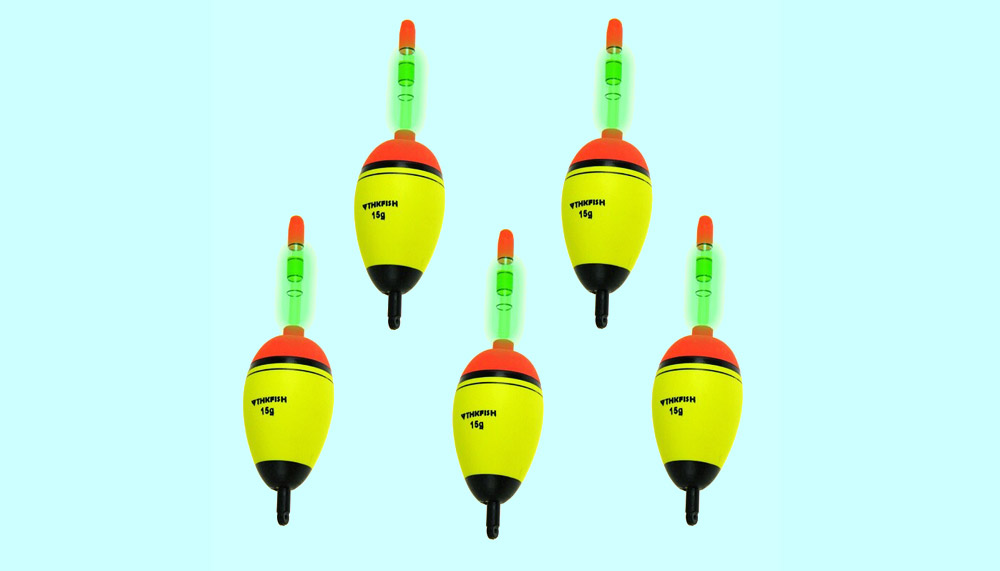
These are probably some of the most popular options for luminous floats and are used by almost every angler. The accessory has a luminous accumulation effect so that it can be visualized. The essence of emission is that the accessory is covered with a special material that absorbs and accumulates light. As for the duration of the glow of such afloat, the charge will be enough for an hour, after which the brightness will gradually fade. Even a light glow in the dark will make fishing comfortable.
It is important to note that it is not necessary to charge the fluorescent float only during the day. To resume its action, it is sufficient to hold near an electric light or just illuminate the flash, which is equipped with any modern phone. Of course, during the night fishing, it will be necessary to make regular lighting, sometimes it is an inconvenience, but this is a minor disadvantage of the accessory.
In addition, the cost of such a unit is available to everyone, and if desired, you can cover the float with phosphorus compounds yourself. The product is offered in a variety of shapes and sizes, you can find a small accessory depending on the fishing conditions and personal wishes. Even wary and fearful fish will go for a lure with a fluorescent float, as it does not affect the delicacy of the equipment.
Smart Fishing Float

LED Smart Night Fishing Float – such afloat is arranged as a modern unit based on LED technology. The glow effect is very much in demand, and the accessory is available in many different versions. The design consists of a transparent calf, inside which is the LED. This device runs on batteries or is equipped with a rechargeable battery. The former can be easily replaced at any time, they are sold almost everywhere. The LED light can be easily switched off, if necessary when it is getting close to morning. The float will be perfectly visible even at a great distance. As for the disadvantages, the main drawback is that the design is somewhat crude, but this does not prevent anglers from actively using the accessory.
These floats are ideal for night fishing. They are highly sensitive and that is why you can control your light with one hand. When a fish is hooked, you will feel it immediately. As a rule, the color of the float will change from red to green the moment the fish bite your bait and the float sinks beneath the surface of the water.
Color Alarm Smart Fishing Float – Does it Work
These floats can be used both during the day and at night. You can use them in different bodies of water. The way they work is that they emit a sound signal and also change color when a fish is caught on your hook.
How Do I Attach a Luminous Float
You can fix the firefly to the rod in several ways:
- With the transparent tube supplied (usually used to mount the firefly on the float’s antenna). Only tubes in which the firefly moves freely are suitable. Cut the tube into two parts and put them through the tulip, then you can insert the activated signaler.
- Special mounts can also be purchased. They are hooked to the tip of the rod, and our light alarm is snapped into them. Please note: These products may differ in the diameter of the attachment. It is necessary to select one. It is best if it is held firmly in the area between the second and third ring.
- I fix the fireflies with narrow stationery tape. This is the best way to hold the beacon. Sometimes the tape is folded over the quivertip to keep the line/twine from getting under the firefly when it is cast.
- It is also possible to insert a luminous element in a special socket. This float has a luminous stick so you won’t miss a nibble at night.
The Benefits of Using Night Fishing Lights
They ensure excellent visibility at all times, whether in twilight or total darkness, a clear indication of the bait. They exclude false alarms. This allows you to fish at night with several rods and the chance to relax and just keep an eye on the float instead of squinting and spoiling your eyesight. They ensure multiple uses.
And a small minus from personal experience. Light from the float can scare off some species of fish and fishing may not work.
Staying Safe and Sound: Night Fishing Best Practices
👍Personal Safety: Ensuring personal safety during night fishing is crucial. Wear appropriate clothing and gear for the weather and water conditions, including waterproof footwear and a life jacket if necessary. Keep a fully charged phone on hand for emergencies and ensure someone knows your fishing location and expected return time. Always stay aware of your surroundings, paying close attention to changes in weather, water currents, and any potential hazards.
👍Fishing with a Buddy: Fishing with a partner at night offers several advantages. It not only enhances safety but also allows you to cover more water and try different techniques. Communication and cooperation are key when fishing with a buddy; ensure you have a plan and understand each other’s roles. A fishing partner can also assist with tasks like netting fish, helping to ensure a more efficient and enjoyable night fishing experience.
👍Environmental Considerations: As a responsible angler, it’s important to minimize your impact on the environment and show respect for wildlife and other anglers. To minimize light pollution, use only the necessary amount of light and direct it downwards, or use red or green light settings to preserve night vision. Keep noise levels down to avoid disturbing fish and other wildlife, and maintain a respectful distance from other anglers. Finally, always practice catch and release whenever possible, and leave your fishing spot as clean, if not cleaner, than you found it.
FQA – Help with Night Fishing
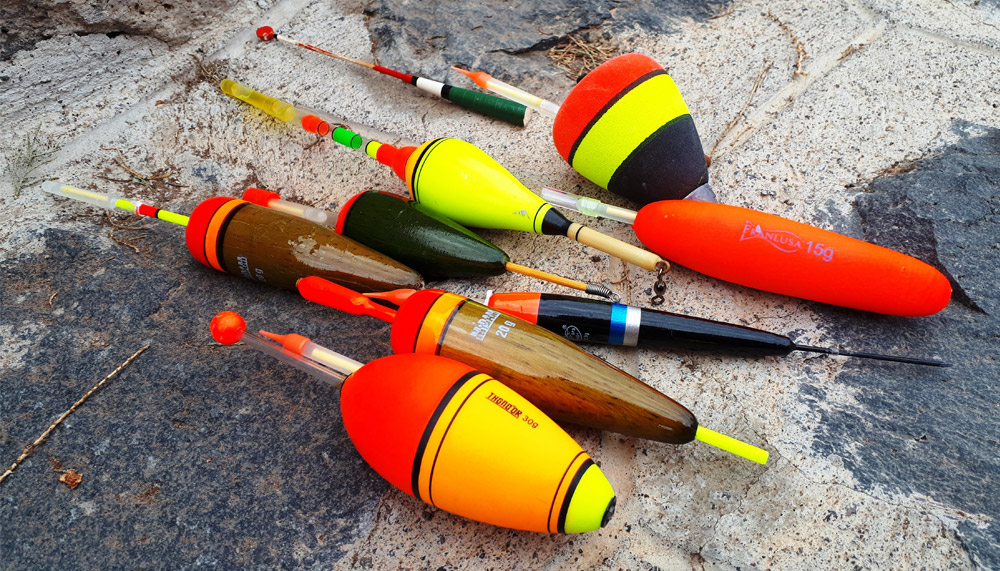
Illuminating the Night: Concluding Thoughts on Float Fishing in the Dark
Recap of Key Night Fishing Techniques Using Floats
In conclusion, night fishing with floats is a unique and rewarding experience that requires a tailored approach to ensure success. Key techniques include using appropriate rod and reel setups, selecting the right floats and illuminated accessories, preparing your fishing spot, adjusting float depth, choosing effective bait types and presentation, mastering casting and positioning, and honing your bite detection and hook-setting skills in low-light conditions.
Embracing the Unique Challenges and Rewards of Night Fishing
Night fishing offers a different dimension to the angling experience and can be both challenging and exciting. By embracing the unique aspects of night fishing, such as limited visibility, different fish behavior, and a quieter atmosphere, you can enjoy an entirely new way to connect with nature and improve your angling skills.
Wishing Readers Successful and Enjoyable Night Fishing Experiences
We hope this guide has provided valuable insights and tips to help you make the most of your night fishing adventures using floats. By applying these techniques, prioritizing safety precautions, and adopting best practices, you can look forward to successful and enjoyable night fishing experiences. Tight lines and happy fishing!
Not only can night fishing be an unforgettable adventure and a source of great experiences, but it can also make the angler happy with a great catch, as in summer the fish prefer to feed at night when the heat subsides. As darkness falls, the fish become hungrier, more active, and have a good bite. I hope my article has helped you to understand how to fish with a nightlight.

I live in Tenerife (Canary Islands) for the last 10+ years and share my daily fishing experiences on my website. Many years of personal experience as a fisherman and the vast experience of my friends allow me to write professionally on any fishing topics (from choosing a flashlight and equipment to deep-sea fishing).
All of my advice is based on practical real-world experience and will be useful to both novice anglers and professionals. Read more about the author.
Affiliate Disclosure: FishReeler.org sometimes gets paid for listings, through sponsors or affiliate programs like Amazon, Ebay, Cabelas, Bass Pro Shop, Shimano, Daiwa, Rapala, Renn, Okuma, KastKing, etс. Clicking a link helps keep FishReeler.org free, at no extra cost to you!
About the author: Each article is verified by the fishing expert Sergio Smirnoff. The articles are written by professional and amateur fishermen with 20+ years of fishing experience.
Note: The views and opinions expressed in this article are those of the authors and do not necessarily reflect the official policy or position of any agency. The articles are for informational purposes only, share your opinions in the comments and join the fishing discussions, let's share our fishing experiences together!

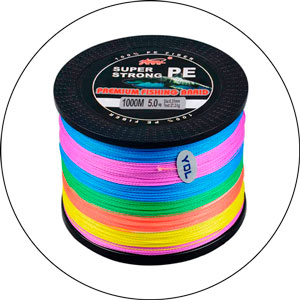
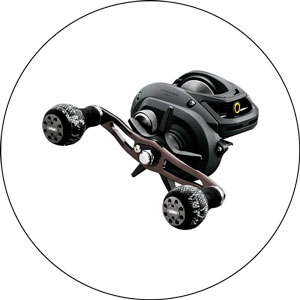

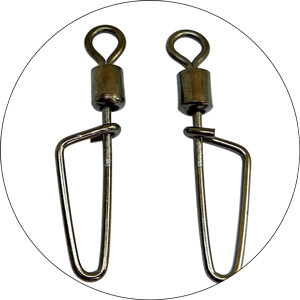
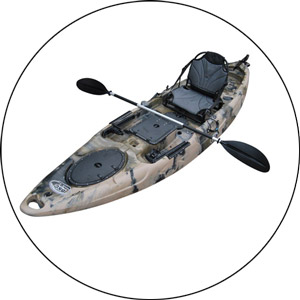
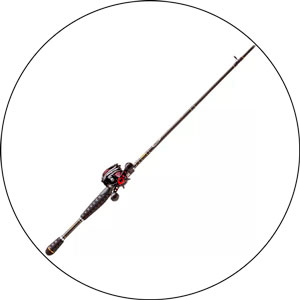
The best light for night fishing is a glow stick with a battery. The design is reliable and has strong light (visible up to 100 meters). For such a firefly I prepare a special waterproof plastic case, which protects it from water. the rest is one plus design.
I appreciate the in-depth breakdown of how to choose the right fishing equipment for night fishing. Investing in a good headlamp and a quality blacklight is essential. Thanks for the recommendations in this article!
As someone who’s always fished during the day, I found this article really eye-opening. The techniques for using lures and jigs for night fishing are quite different than daytime fishing. Thanks for providing a detailed guide on how to adapt!
The safety tips mentioned in this article are crucial for anyone trying night fishing for the first time. A well-lit area, appropriate gear, and communication devices can make a huge difference. Thanks for emphasizing the importance of safety, FishReeler!
Wow, I had no idea fishing at night could be so fruitful! Thanks for sharing these insights, especially the section about the benefits of moon phases. I’ll definitely pay more attention to that when planning my next night’s fishing trip.
Great article! I found the tips on using artificial lights and attracting baitfish really helpful. Night fishing is a totally different experience, and this guide provides excellent pointers for beginners.
It’s interesting to know that you can get floats with removable tips and insert night lights, or even use tubing to fix the night light to the top. I heard someone once took these glowing floats to India and the locals absolutely loved them, especially since this was before the internet became widespread.
As for night fishing, I haven’t tried it properly yet, but using a bell attached to the end of the rod seems like a simple and effective way to detect a bite, even without needing to see it. A rechargeable headlamp might be useful for occasional illumination when needed. One issue to consider, however, is that bugs tend to be attracted to light sources, so perhaps setting up a portable lantern a bit further away could help mitigate that problem.
This post brought back a flood of memories from past experiences and anticipation for future night fishing adventures!
I’ve heard that some anglers have tried various night float types, ranging from beta light inserts to floats with built-in beta lights, which are non-chemical glow-in-the-dark sticks. They tend to work best in complete darkness but can still be difficult to see at times. I even recall some using battery-operated night floats powered by hearing aid batteries – heavy but effective.
These days, many opt for chemical lights inserted into clear plastic tubing, which forms a ringlet that’s placed around the fishing line as a bobbin behind bite alarms. For night float fishing, a simple solution is to use a thin rubber band wrapped around the top of the float and the base of the night light. Though a bit crude, it does the job. Then, it’s just a matter of waiting for the float to glide underwater, pulled by an unseen force.
It seems like float fishing is a “top-down” approach that uses a float (also called a bobber in some regions), a leader, and a jig or weighted bait/lure. The bait is suspended a foot or so above the riverbed with the help of a float. From the comment above, it appears the angler is float fishing. On the other hand, drift fishing is more of a “bottom-up” technique.
In drift fishing, one starts with a weight heavy enough to bring the presentation to the river bottom (usually a pencil-style lead), a leader, and a buoyant bait/lure at the end. The idea is to have the bait/lure floating a foot or so above the riverbed, with the weight ticking the bottom.
While waiting, the challenge is to distinguish between the taps felt from the weight ticking the bottom and the tap felt when a steelhead takes the presentation. Float fishing provides visual stimulation, as you can see the float go down, whereas drift fishing is actually stimulating, as you must feel the fish taking your presentation. I hope this explanation helps clarify the differences between the two techniques.